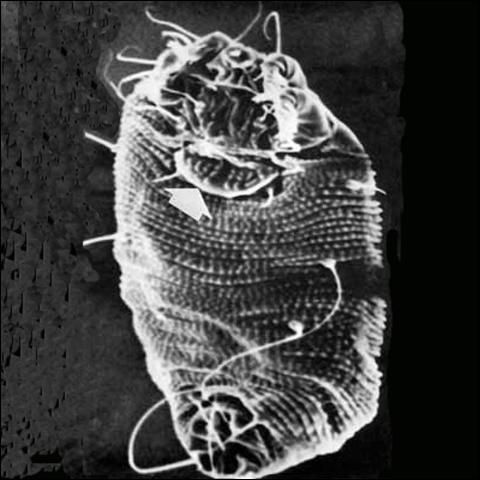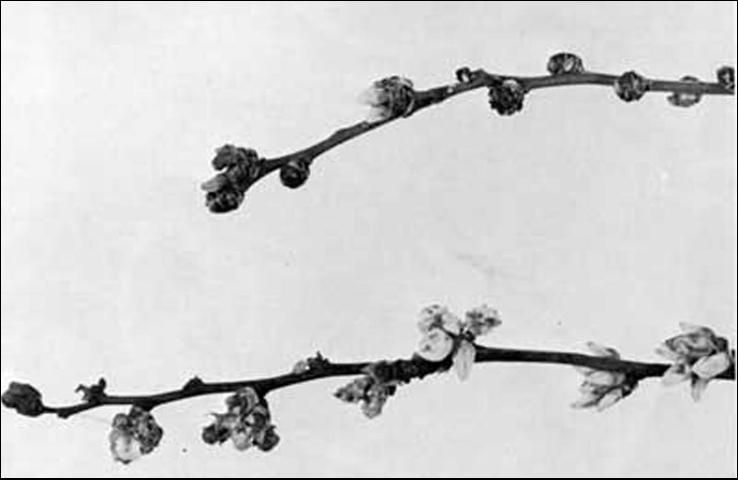The Featured Creatures collection provides in-depth profiles of insects, nematodes, arachnids and other organisms relevant to Florida. These profiles are intended for the use of interested laypersons with some knowledge of biology as well as academic audiences.
Introduction
The blueberry bud mite, Acalitus vaccinii (Keifer), was originally described by H. H. Keifer in 1939 from specimens collected in North Carolina and, at that time, was called Eriophyes vaccinii Keifer. However, in 1965 when Keifer erected the genus Acalitus, the mite was transferred to this genus based on its morphological characteristics. This mite has been reported on both cultivated and wild plants of the genus Vaccinium.
Distribution
Acalitus vaccinii has been collected in Florida at Melrose and Palatka on commercial stands of blueberries.
Description
The blueberry bud mite is white, and about 200 microns or 1/125 of an inch long. The mite lacks a foretibial seta which puts it in the genus Acalitus. Specifically, it has a shield pattern with a pair of obscure curved lines toward the rear center between the backward-directed shield setae. The female genital coverflap has longitudinal tubercles.

Credit: Division of Plant Industry

Credit: Division of Plant Industry
Life History
There is little known about the life history of this mite in Florida. The semitropical conditions in the state would seem to indicate that the mite does not have an overwintering female as in North Carolina.
Hosts
To date this mite has been taken on the commercial varieties of blueberry— 'Tifblue' and 'Woodard', as well as several new cultivars. Based on typical injury, no variety appears to be immune to bud mite attack.
Economic Importance
It was estimated by one grower in Melrose that over 60% of his crop was lost as a result of mite and thrips damage. This mite attacks the buds which become closely packed or rosetted on the stem and then fail to expand and bloom. This results in berry and leaf loss. Keifer stated that mite feeding caused an unnatural succulence and epidermal roughening or blistering at the base of the fruit bud scales, causing them to hang in a tight rosette at the base of the fruit stem. Affected berries appear roughened and malformed. Also, the base of the fruit stem usually is blistered, retaining the juvenile red color of growing vacciniaceous tissue. In North Carolina, the rosetting is accompanied by fruit roughening or deformation of the entire cluster, while in Georgia it is reported not only that fruit clusters are deformed, but that retarded leaf growth also occurs. In Florida, our observations indicate bud loss is the primary damage from mite feeding.

Credit: Division of Plant Industry

Credit: Division of Plant Industry
Management
Effective control is extremely difficult since the mites are protected by the bud scales. It is essential that sprays be applied at fairly high pressure (150 to 200 psi) and high volume to obtain effective coverage and penetration. Timing of the application is important but poorly understood under Florida conditions.
Selected References
Keifer, HH. 1939. Eriophyid Studies V. Bulletin of California Department of Agriculture 28: 329.
Keifer, HH. 1941. Eriophyid Studies XI. Bulletin of California Department of Agriculture 30: 192–204.
Keifer, HH. 1965. Eriophyid Studies B-14. California Department of Agriculture, p. 2.